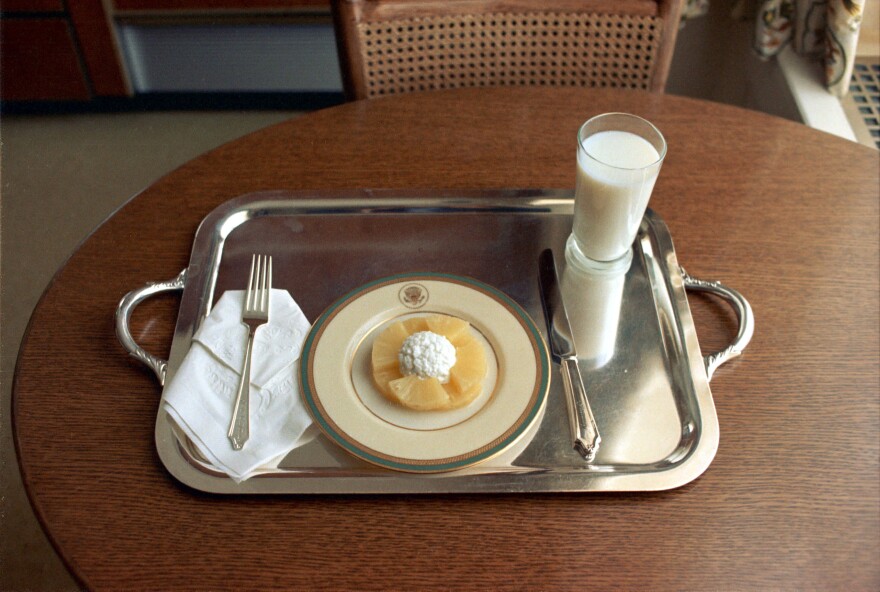As you know, here at The Salt we've been a little obsessed with yogurt lately.
But there's a flip side to the story of the yogurt boom. What about that other product made from fermented milk that had its boom from 1950 to 1975, and has been sliding into obscurity ever since?
Cottage cheese took off as a diet and health food in the 1950s.
It makes a cameo in the show Mad Men, that time capsule of the 1960s, as poor Betty Draper describes her last meal before going to the hospital to give birth: "Toast, cottage cheese, pineapple," she tells her unsympathetic nurse.

Cottage cheese peaked in the early 1970s, when the average American ate about 5 pounds of it per year, according to the U.S. Department of Agriculture. Richard Nixon apparently ate even more.
The same hidden tape recorders that helped bring down our 37th president also recorded him repeatedly ordering cottage cheese, often with pineapple.
Since then, though, Americans have cut their cottage cheese consumption in half. For comparison, per capita consumption of yogurt has increased sevenfold over that time.
Nobody can be sure of the exact reasons for this.
Tim Noll, who worked for decades as plant manager for a now-shuttered cottage cheese manufacturer called Bancroft Dairy in Madison, Wis., thinks it's partly due to the difficulty of making cottage cheese of consistently high quality. "I think it's safe to say that in just about every plant that makes cottage cheese, it's regarded as the hardest product to make," he says.
Robert Bradley, who's taught cheese-making at the University of Wisconsin, Madison, for 50 years, agrees. "It takes personal attention. It's a very fragile product," he says.
Making cottage cheese starts with milk and bacteria, as yogurt does, although the two products use different types of bacteria. A semi-solid curd forms, and just at the right moment, you have to cut the curd into small cubes. Then the curd is cooked and washed. Sometimes cream is added. It all takes careful handling.

"We don't have the degree of dedication to this manufacture that we used to have," Bradley says.
As a result, quality varies. Bradley says that sometimes the product doesn't taste quite right.
Noll, though, points to another difficulty that has nothing to do with manufacturing. The people who run big food companies these days seem to feel that cottage cheese is a little old-fashioned. "I haven't heard anybody on the marketing side trying to do anything exciting with cottage cheese in quite a while," he says.
That, of course, is very different from yogurt.
When I recently visited the dairy aisle of one supermarket, I found five whole sections of shelves filled with Greek yogurt, Australian-style yogurt and yogurt with all different flavorings. Off in the corner, there was one set of shelves with generic-looking cottage cheese.
Gerry Berman, a shopper, says there's lots of marketing about how "Greek yogurt is so good for us." Cottage cheese doesn't have the same marketing behind it. "Nobody talks about it anymore."
"When we were younger, it was really promoted for your salad," says her friend Madeline Anglin.
"Cottage cheese and peach slices!" says Berman. "And a hamburger patty!"
A younger shopper, Mary Scott Bogatz, tells me that she hasn't tasted cottage cheese in years. "It's really good for you, I know, but I just don't like the chunky and the creamy; the texture freaks me out," she says.
She walks off with a big container of plain yogurt.
But then, a few minutes later, she comes back. Just talking about cottage cheese got her thinking about it, she says. She's ready to try some again.
Maybe there's hope for cottage cheese after all.
Copyright 2021 NPR. To see more, visit https://www.npr.org.




